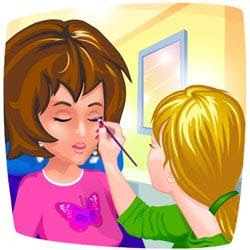 Valentines Day is in the air. Most women are looking forward for a great and romantic date with their love ones. Whether your new boyfriend wants to take you on a sexy date or your husband wants to treat you to an elegant evening dinner, you’ll need to dress for love!
Valentines Day is in the air. Most women are looking forward for a great and romantic date with their love ones. Whether your new boyfriend wants to take you on a sexy date or your husband wants to treat you to an elegant evening dinner, you’ll need to dress for love!Use these tips and ideas below to figure out what to wear on St. Valentine’s Day to make the holiday of love full of fashionable fun.
Choosing Your Color Wisely – Why Not Red, Pink or Hearts
Nothing says Valentine’s Day like wearing red or pink. While these colors may be too bold for everyday wear, they are more than acceptable for the holiday of love. When choosing your perfect red or pink outfit, think about your skin tone and hair color. There are thousands of shades of both colors, allowing you to wear one which will compliment your skin. Those with dark hair can get away with bolder colors of red. Those with light hair should stick with cooler shades of red or pink. However, those with red hair should steer clear of red altogether and choose a nice light pink for the holiday. If you can fathom wearing either red or pink in your outfit, consider celebrating the holiday with accessories. Add a red scarf to your black suit or a pink belt to your little back dress.
Get Flirty In a Skirt
If you want to look like you’re up for a little flirting fun, think about choosing a skirt for your Valentine’s Date. Since this holiday is extremely romantic, it’s a great idea for you to embrace your feminine style and dress like a lady. A great red, pink or black dress is ideal. However, a great A-line or pencil skirt can make just as great of an impression. Pair it with a form fitting top, high heels and soft jewelry for maximum fashion style.
 Sexy Lingerie Makes A Statement – Even if it is Just for You
Sexy Lingerie Makes A Statement – Even if it is Just for YouWhether you plan on showing it off or not, lingerie is a “must” on a Valentine’s Date. Lingerie automatically makes a woman feel more feminine, sexy and attractive. Thus, it’s a great idea to buy something new to wear under your clothing for a romantic date on Valentine’s Day. Even if you don’t allow anyone else to sneak a peek, you’ll feel sexier just by having it on.
Makeup & Hairstyles for Romantic Evenings
Valentine’s Date makeup should be suited for the activity. For example, if your date is taking you on a romantic ice skating date in New York City, there’s no need for full makeup and extravagant hairstyles. Instead, choose to keep it simple and sweet with rosy cheeks, glossy lips and a neutral eye. Keep your hair simple and romantic by curling it into soft curls and pulling it into a ponytail.
However, if your date is in the evening think about using a smoky eye makeup technique, red gloss on the lips and rosy cheeks. For extra shimmer, skip the glitter (it’s only reserved f
 or teens and young girls) and instead use a champagne body shimmer on your cheeks and cleavage. In a pinch you can substitute the genuine body shimmer for shimmering white eye shadow or highlighting cream. An evening date requires more sophisticated hair so choose a fancy up-do, a simple bun or loose and flowing curls.
or teens and young girls) and instead use a champagne body shimmer on your cheeks and cleavage. In a pinch you can substitute the genuine body shimmer for shimmering white eye shadow or highlighting cream. An evening date requires more sophisticated hair so choose a fancy up-do, a simple bun or loose and flowing curls.Clothing To Avoid – Keep it Elegant
Just because it’s Valentine’s Day doesn’t mean you should pull out the hearts and cupid imprinted turtleneck or the homemade holiday sweatshirt. Instead, choose to be festive in a more subtle manner. You can quickly add a sense of holiday fun to an outfit my using metallic accessories to celebrate. A scarf with a metallic stripe in it or even a shirt with a silver pinstripe can instantly scream “holiday” while still allowing you to look classy and in fashion.


